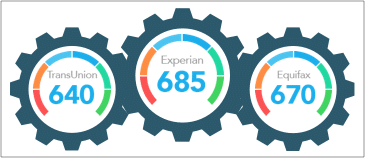For the past year, student loan borrowers have enjoyed a zero percent interest rate as part of coronavirus relief, but for the coming year, rates have increased. On July 1, the interest rate on federal student loans for undergraduates increased to 3.73% for the 2021-2022 school year. The new rate will increase the interest charges on a 10-year loan by about $550 per $10,000 borrowed. On a $20,000 loan, that works out to about $10 more per month.
The increase is almost a full percentage point more than the 2020-2021 rate of 2.75%. However, many borrowers benefited from forbearance and zero-interest programs during the pandemic. As more colleges prepare to resume in-person classes, that relief is coming to an end. The forbearance period, or payment pause, on current federal student loans is set to expire on September 30.
Here’s what you need to know about rising student loan rates, and how to make sure you manage your student loan well.
Why Are Student Loan Rates Going Up?
The federal student loan rate resets every year on July 1. The new interest rate is determined based on a formula tied to the current yield of 10-year Treasury notes, which are investments guaranteed by the U.S. government.
As a result of the pandemic, the interest rates on Treasury notes have risen—and student loan rates will follow with an increase to 3.73%.
Despite the increase, the new interest rate remains relatively low. For example, three years ago, the interest rate on federal student loans reached 5%, reports The New York Times.
Does the Increase Affect All Student Loans?
No, this rate change only affects federal student loans. Private student loans, such as those offered by banks and online lenders, will not be affected by the federal rate change. Private lenders calculate their interest rates in different ways and based on their own formulas, and usually consider things like your credit history and your debt-to-income ratio.
If you’re considering getting a private student loan, make sure you understand what your interest rate is and whether it will be a fixed or variable rate. A fixed rate will stay the same over a set period of time, so that you can always count on a consistent monthly payment. A variable rate may fluctuate periodically based on various factors—you may get a really low initial interest rate, but it could go up over time.
Interest rates on federal student loans are fixed for the life of the loan, so you can always count on the same monthly payment. That fixed rate is based on the current rate for that year, rather than on your credit, so everyone who gets a federal student loan during the 2021-2022 school year will pay the same increased rate of 3.73%.
Why Does It Matter?
If you need a student loan to complete your education, the changing rate may not affect your decision. But the interest rate on your student loans can affect your financial situation (and your credit) for years.
For example, your student loan will affect your credit in the same way as any other debt. Account information, such as the amount of the loan, your monthly payment amount, and your payment history are all factored in when your credit score is calculated. A higher interest rate means your payments will be higher, tying up more of your money. And that can potentially make it more difficult to meet future financial goals, such as buying a home.
Rather than stressing out about a higher interest rate on student loans, just make sure you understand your loan agreement and how it will affect you. Follow these three steps before signing on the dotted line:
- Shop around for the best rate. Usually, you can get the lowest interest rate with a federal student loan. But if you have a regular income and good credit history, you may be able to find a lower rate with a private student loan. Keep in mind that with a federal student loan, you would have access to any federal government programs that may be introduced in the future, such as loan forgiveness.
- Look for ways to decrease your loan amount. A wide variety of scholarships and grants are available to help lower the cost of higher education. Take time to search for and apply for as many opportunities as possible. Every scholarship or grant dollar you get will lower the amount you’ll need to borrow. (A good rule of thumb is to avoid borrowing more than you expect to make in your first year of post-college employment.) Also, avoid using student loan dollars to fund your living expenses. If possible, work a part-time job to help cover your bills. Remember, every student loan dollar you spend will be paid back with interest, so that $10 burrito bowl will cost you almost $14 if you pay for it with your loan.
- Start building positive financial habits now. Even though you won’t be required to start making payments on your student loan until after you leave school, it’s a good idea to get into the habit of paying bills on time and in full. Consider using a budgeting app to get you in the habit of spending with a plan. Work to save some money for emergencies, and make sure you pay all bills on time. By developing these habits now, you’ll be better prepared to make your student loan payments on time after you leave school. And staying current on your bills is one of the biggest factors in your credit score.




